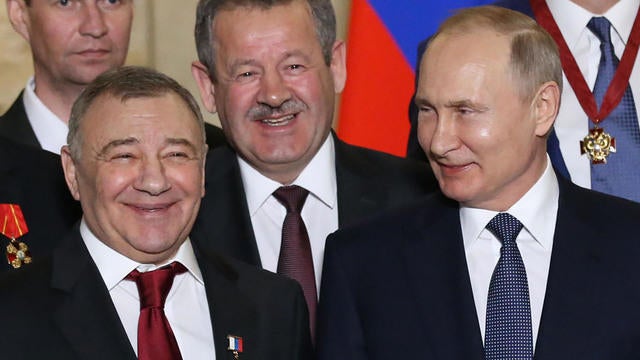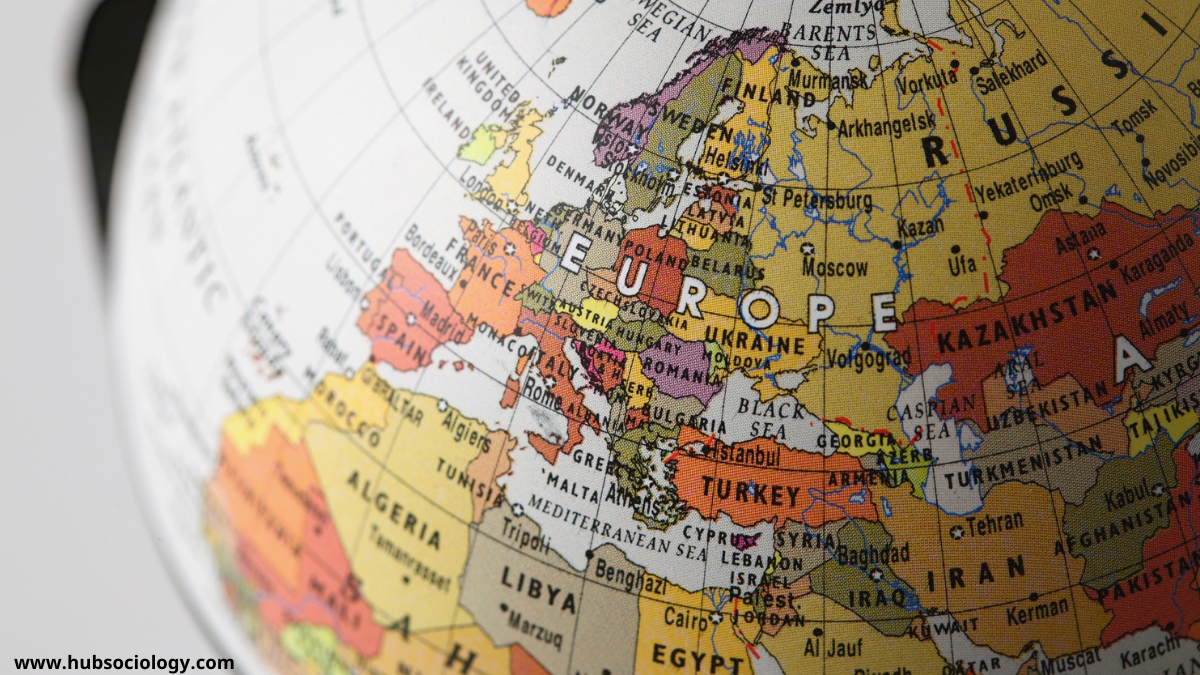Introduction
The collapse of the Soviet Union in 1991 was one of the most significant geopolitical and social transformations of the 20th century. Among the fifteen newly independent states that emerged from this dissolution, the five Central Asian republics—Kazakhstan, Kyrgyzstan, Uzbekistan, Turkmenistan, and Tajikistan—underwent an especially complex post-Soviet transition. Their shift from being peripheral regions of a socialist empire to independent nation-states entailed radical political, economic, cultural, and social reconfigurations.
From a sociological perspective, the post-Soviet transition in Central Asia is not merely a matter of political sovereignty or economic restructuring, but a deep transformation in identities, institutions, norms, and collective memory. The process involved negotiating between Soviet legacies and indigenous traditions, between globalization and localism, and between authoritarianism and democratic aspirations. This article explores the sociological dimensions of this transition, analyzing how Central Asian societies adapted to new realities and how these adaptations shaped everyday life, community relations, and long-term social development.

1. The Soviet Legacy in Central Asia
Before examining the transition, it is crucial to understand the social structures inherited from the Soviet system.
- Economic Integration and Dependency
- Central Asia was integrated into the Soviet planned economy as a resource periphery. Kazakhstan became a hub for heavy industry and mining, while Uzbekistan specialized in cotton monoculture.
- This created structural dependencies that shaped post-Soviet challenges, including unemployment, migration, and resource distribution.
- Cultural and Linguistic Transformation
- Russian language became the lingua franca, dominating education, administration, and intellectual life.
- Local traditions, Islamic practices, and indigenous languages were suppressed or marginalized, leading to a complex cultural duality in post-Soviet identity formation.
- Authoritarian Political Culture
- The Soviet Union imposed centralized governance and weakened traditional tribal, clan, and religious authorities.
- This led to a strong state apparatus but suppressed civil society, limiting grassroots political participation.
Thus, the post-Soviet transition in Central Asia was shaped by both the presence of Soviet legacies and the absence of strong indigenous institutions that could immediately replace them.
2. Nation-Building and Identity Reconstruction
One of the most profound sociological processes of the post-Soviet transition was nation-building. For decades, Soviet identity overshadowed ethnic identities, and national boundaries were drawn more for administrative convenience than for reflecting historical or cultural continuity. After independence, Central Asian republics sought to reconstruct their national identities.
a) Ethnic Identity and National Narratives
- Kazakhstan promoted the concept of a “Kazakh nation” while simultaneously balancing the presence of large Russian and other minority populations.
- Uzbekistan emphasized its historic role as the center of Turkic civilization, reviving the legacies of Timur and other cultural icons.
- Turkmenistan created a cult of personality around Saparmurat Niyazov (“Turkmenbashi”), intertwining nationalism with state ideology.
- Kyrgyzstan and Tajikistan revived pre-Soviet histories and myths to strengthen collective identity.
b) Religion and the Re-Islamization of Society
- The collapse of Soviet atheism allowed for a revival of Islam as a cultural and moral system.
- Mosques were rebuilt, religious education expanded, and Islamic holidays re-entered public life.
- However, governments tightly controlled religious organizations, fearing political Islam as a threat to stability.
c) Language as a Symbol of Identity
- Language policies were central to nation-building. For example, Uzbekistan and Turkmenistan shifted from Cyrillic to Latin alphabets to symbolically distance themselves from Russia.
- At the same time, Russian remained important in higher education and international communication, creating a tension between national revival and global integration.
3. Economic Transition and Social Inequalities
The shift from a centrally planned economy to market-oriented systems was one of the most challenging aspects of the post-Soviet transition.
a) Collapse and Adaptation
- The early 1990s saw severe economic dislocation: factories closed, agricultural production collapsed, and inflation soared.
- Ordinary people faced poverty, unemployment, and insecurity, which reshaped family structures and survival strategies.
b) Migration and Labor Mobility
- Millions of Central Asians migrated, particularly to Russia, for employment.
- Labor migration became a key social safety valve and a source of remittances, but also created new challenges such as brain drain, family separation, and xenophobia abroad.
c) Stratification and Inequality
- Market reforms created new elites—business leaders, political insiders, and oligarchs—while large sections of society fell into poverty.
- Rural-urban divides deepened, as cities attracted investment while villages remained marginalized.
- Social stratification altered traditional patterns of equality within collective farms and Soviet institutions.
4. Political Transformations and Social Control
Although independence initially raised hopes for democracy, most Central Asian states evolved into authoritarian regimes with varying degrees of personal rule.

a) Continuity of Authoritarianism
- Former Communist Party elites retained power under new national titles.
- Leaders justified authoritarianism by citing the need for stability in ethnically diverse and economically fragile societies.
b) Clan and Patronage Politics
- With the weakening of Soviet institutions, traditional clan and kinship networks re-emerged as important mechanisms of social organization and political patronage.
- Access to resources, jobs, and political influence often depended on kinship ties, undermining meritocracy.
c) Civil Society and Limited Dissent
- NGOs, youth groups, and independent media struggled to survive under censorship and state control.
- At the same time, grassroots movements occasionally emerged, such as Kyrgyzstan’s “Tulip Revolution” in 2005, reflecting society’s demand for accountability.
From a sociological standpoint, political systems in Central Asia reflect a hybrid model: formal state institutions coexist with informal social networks and traditional cultural practices.
5. Gender Relations and Family Dynamics
The post-Soviet transition also had profound effects on gender relations and family life.
a) Soviet Legacy of Women’s Emancipation
- Under Soviet rule, women participated in the workforce and received education on a large scale.
- However, gender equality was often superficial, with traditional patriarchal values persisting beneath the surface.
b) Post-Soviet Challenges
- Economic hardships forced many women back into domestic roles, while men migrated abroad for work.
- Some societies witnessed a revival of patriarchal norms, early marriages, and restrictions on women’s mobility.
- Yet, women also became key actors in small-scale entrepreneurship, education, and local community activism.
c) Intergenerational Relations
- The extended family remained central in coping with economic crises, as younger generations relied on elders for support.
- At the same time, exposure to global media and migration reshaped youth aspirations, creating generational tensions regarding tradition, religion, and modernity.
6. Globalization, Modernization, and Cultural Change
Central Asia’s post-Soviet societies are increasingly shaped by global cultural flows.
- Media and Internet: Access to global media introduced new lifestyles, consumer aspirations, and political awareness.
- Education: Foreign universities and exchange programs exposed youth to international norms, leading to an emerging cosmopolitan class.
- Cultural Hybridization: Soviet legacies, Islamic revival, Turkic traditions, and global modernity co-exist, producing hybrid cultural forms in music, art, and literature.
This blending creates social tensions: while elites and urban youth embrace globalization, rural populations often emphasize cultural preservation.
7. Conflict and Social Stability
Not all post-Soviet transitions were peaceful. Tajikistan experienced a devastating civil war (1992–1997), rooted in regional, ethnic, and ideological divisions. This highlights how fragile social fabrics could become when faced with economic collapse and political instability.
Elsewhere, ethnic tensions flared in southern Kyrgyzstan between Kyrgyz and Uzbek communities. Such conflicts demonstrate that post-Soviet nation-building often marginalized minorities, leading to struggles over identity, resources, and political power.

However, Central Asian states also developed mechanisms of social control—ranging from authoritarian governance to appeals to cultural unity—that have prevented large-scale collapse.
8. Sociological Theories Applied to the Transition
From a sociological standpoint, the post-Soviet transition in Central Asia can be analyzed through several theoretical lenses:
- Modernization Theory: Suggests that Central Asian states are moving from “traditional” societies towards “modern” ones, though unevenly.
- Dependency Theory: Highlights how Central Asia remains dependent on Russia and global markets, particularly through labor migration and energy exports.
- Postcolonial Sociology: Views Central Asia as a postcolonial space negotiating between imposed Soviet structures and indigenous traditions.
- Social Construction of Identity: Nationhood, language, and religion are socially constructed projects rather than natural continuities.
Conclusion
The post-Soviet transition in Central Asia is a multifaceted sociological process that cannot be reduced to political independence or economic reform alone. It represents a profound reconfiguration of identities, institutions, and social relations.
- Nation-building involved reconstructing ethnic, linguistic, and religious identities while balancing Soviet legacies.
- Economic transition produced new inequalities, migration flows, and survival strategies.
- Political transformation led to authoritarian resilience, but also the re-emergence of traditional networks and sporadic social movements.
- Cultural and gender dynamics reflected both revival of tradition and engagement with globalization.
Ultimately, the sociological lens reveals that Central Asia’s post-Soviet transition is not a linear journey from socialism to capitalism or from authoritarianism to democracy. Instead, it is a hybrid process, where tradition, modernity, localism, and globalism intersect in complex ways.
For scholars and observers, Central Asia remains a laboratory of social transformation, offering insights into how societies navigate the collapse of empire, the challenges of globalization, and the quest for identity in the modern world.
Topic-related Questions
5 Marks Questions (Short Answer Type)
- Define the term post-Soviet transition in the context of Central Asia.
- Mention two major economic challenges faced by Central Asian states after 1991.
- Write two ways in which nation-building was carried out in Uzbekistan after independence.
- What role did the Russian language play in Central Asian societies during the Soviet period?
- State two key features of the Soviet legacy in Central Asia.
- How did migration shape the social life of Central Asia in the post-Soviet era?
- Mention two sociological theories applicable to the study of post-Soviet Central Asia.
10 Marks Questions (Medium Answer Type)
- Explain the process of nation-building in any one Central Asian republic after independence.
- Discuss the role of Islam in reshaping identity in post-Soviet Central Asian societies.
- Analyze the impact of economic transition on family and gender relations in Central Asia.
- Examine the revival of traditional clan and kinship networks after the collapse of the Soviet Union.
- How has globalization influenced youth culture and education in Central Asia?
- Discuss the role of migration and remittances in the survival strategies of Central Asian households.
- Explain how Soviet legacies continue to shape the politics and society of Central Asia.
15 Marks Questions (Long Answer / Essay Type)
- Critically analyze the sociological dimensions of the post-Soviet transition in Central Asia, with reference to nation-building, economy, and identity.
- Examine the relationship between authoritarian political structures and traditional clan-based networks in post-Soviet Central Asia.
- Discuss the gendered impact of post-Soviet transition in Central Asia, focusing on women’s roles, family life, and intergenerational relations.
- Evaluate the influence of globalization on Central Asian societies, highlighting tensions between tradition and modernity.
- Analyze the Tajikistan civil war as a sociological outcome of post-Soviet political and cultural transformations.
- Apply Dependency Theory and Postcolonial Sociology to explain the social challenges faced by Central Asia after independence.
- “The post-Soviet transition in Central Asia is not a linear shift but a hybrid process.” — Discuss with sociological evidence.

1 thought on “Post-Soviet Transition in Central Asia: A Sociological Perspective”